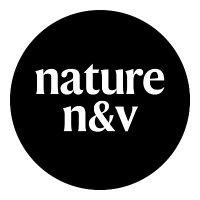
Nature News & Views
@NatureNV
Expert commentary for subscribers on exciting science published in Nature and elsewhere, from astronomy to zoology. Login info at https://t.co/OrObfhBbxv
ID:2993994029
https://www.nature.com/research-analysis 23-01-2015 11:25:12
14,5K Tweets
32,3K Followers
134 Following

How does the hinge of the fly wing work?
Analysis of tiny structures called sclerites, assessment of muscle activity, modelling and robotics have provided new insights discussed by Tanvi Deora Life Sciences_SNIoE go.nature.com/3QtwRgR




A treatment for Timothy syndrome, which affects the heart and brain, has been tested in 3D brain tissues that model the condition — an approach that could be used to find drugs to treat other neurological disorders, says Silvia.Velasco go.nature.com/3Qfl7OM

Sugar gliders and similar marsupial species have a special skin membrane between their limbs that enables them to glide through the air.
Darío G. Lupiáñez unpacks genomic data that pinpoints the gene responsible for this evolutionary adaptation. go.nature.com/3WiL6IX


JWST has revealed a galaxy that formed very early in the history of the Universe, and stopped forming stars much earlier than expected, writes Jacqueline Antwi-Danso go.nature.com/4aRjb7i

The Avars were tribal nomads that conquered central Europe in the sixth century and built an empire that lasted 250 years.
Lara Cassidy details how ancient DNA sampled from Avar burial sites has revealed how their society was organized. go.nature.com/4aRXzry


Cancer is usually thought to be caused by permanent mutations in certain genes, but Classenlab explains how just temporarily disrupting silencing of gene expression in fruit flies can trigger a feedback loop that turns cells cancerous. go.nature.com/3W8mOBs


Researchers have shown that a relatively rare evolutionary event birthed an entirely new species of Amazonian butterfly around 180,000 years ago — Jenn Coughlan and Megan Frayer explain why proving it is so hard. go.nature.com/3xC2Zs6

Umbrella toxins are a newly discovered antibacterial weapon that bacteria use against competitor species
Sarah Coulthurst UoD Life Sciences discusses the implications of this finding. go.nature.com/3Q89gls



How does the hinge of the fly wing work?
Analysis of tiny structures called sclerites, assessment of muscle activity, modelling and robotics have provided new insights discussed by Tanvi Deora Life Sciences_SNIoE go.nature.com/3Q7FSvF

A straightforward method has been developed for measuring vanishingly small concentrations of compounds in water – potentially opening up applications in environmental and forensic science.
peter vikesland explains all go.nature.com/3JktqF8

Sensing of bitter tastes arises from a complex interplay between chemical cues and a range of receptors.
This complexity might be built-in at the level of individual receptors - as explained by Antonella Di Pizio Antonella Di Pizio go.nature.com/4asdI6J

An inhibitor of cell death by necroptosis reduces lung inflammation and prevents lethality in a mouse model of influenza infection.
Nishma Gupta & John Silke WEHI (Walter and Eliza Hall Institute) discuss the implications for developing therapies for respiratory diseases. go.nature.com/4as1j2P